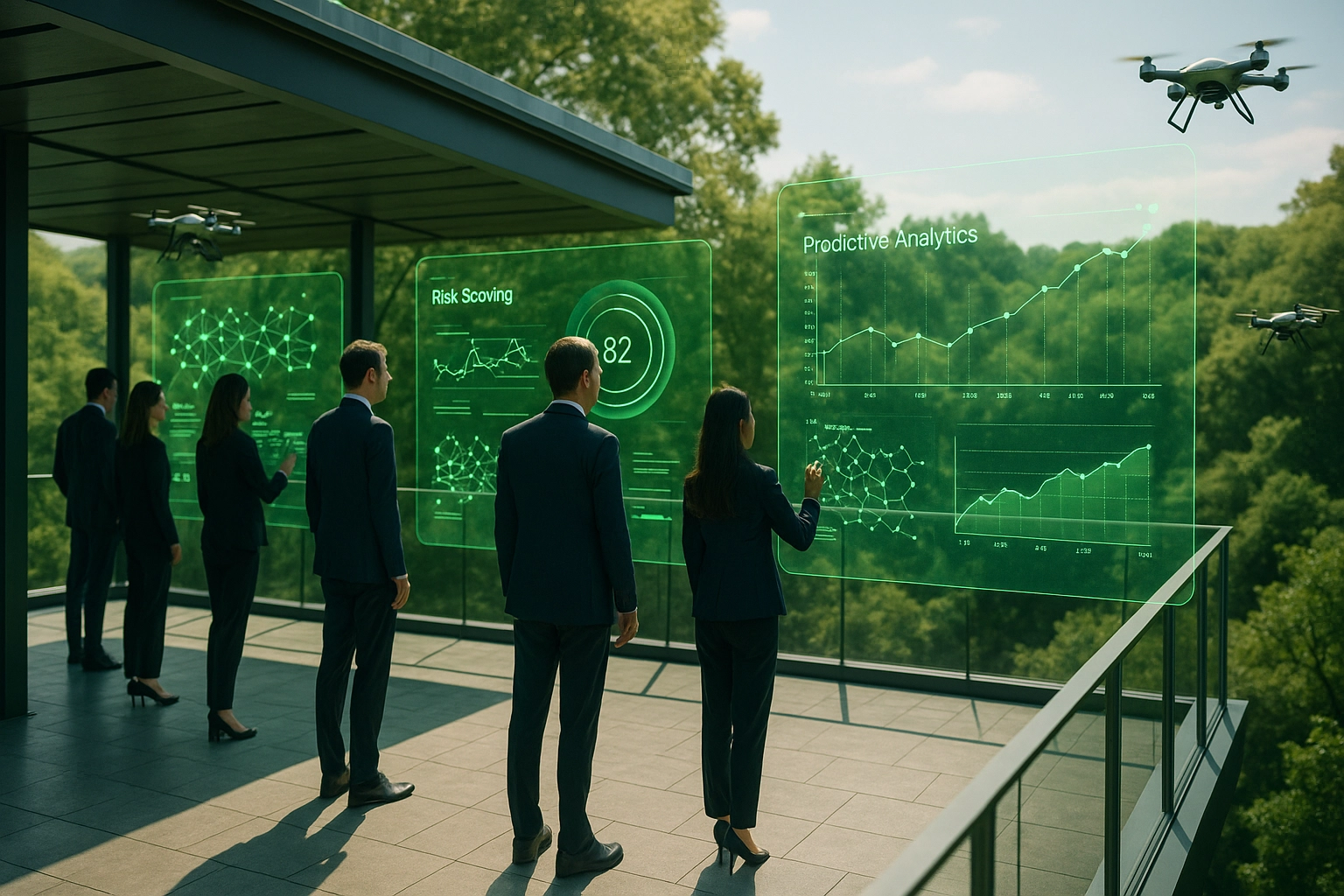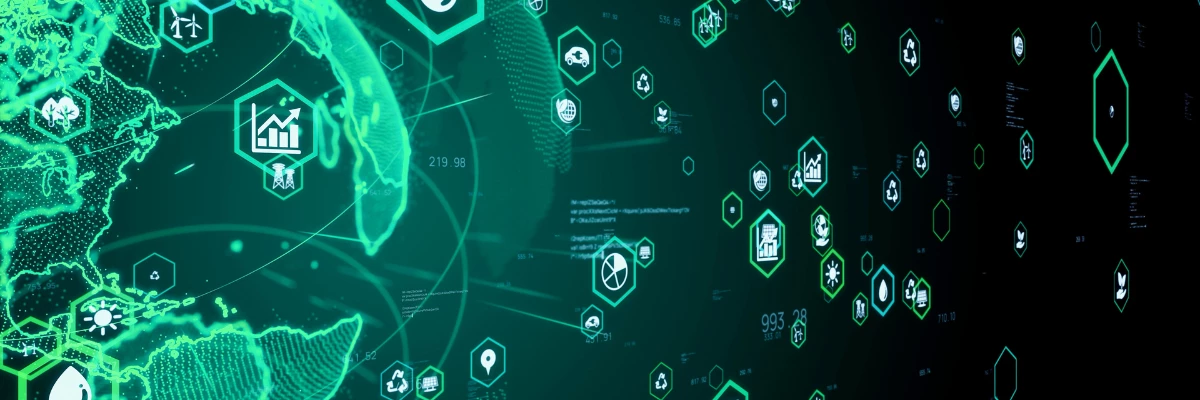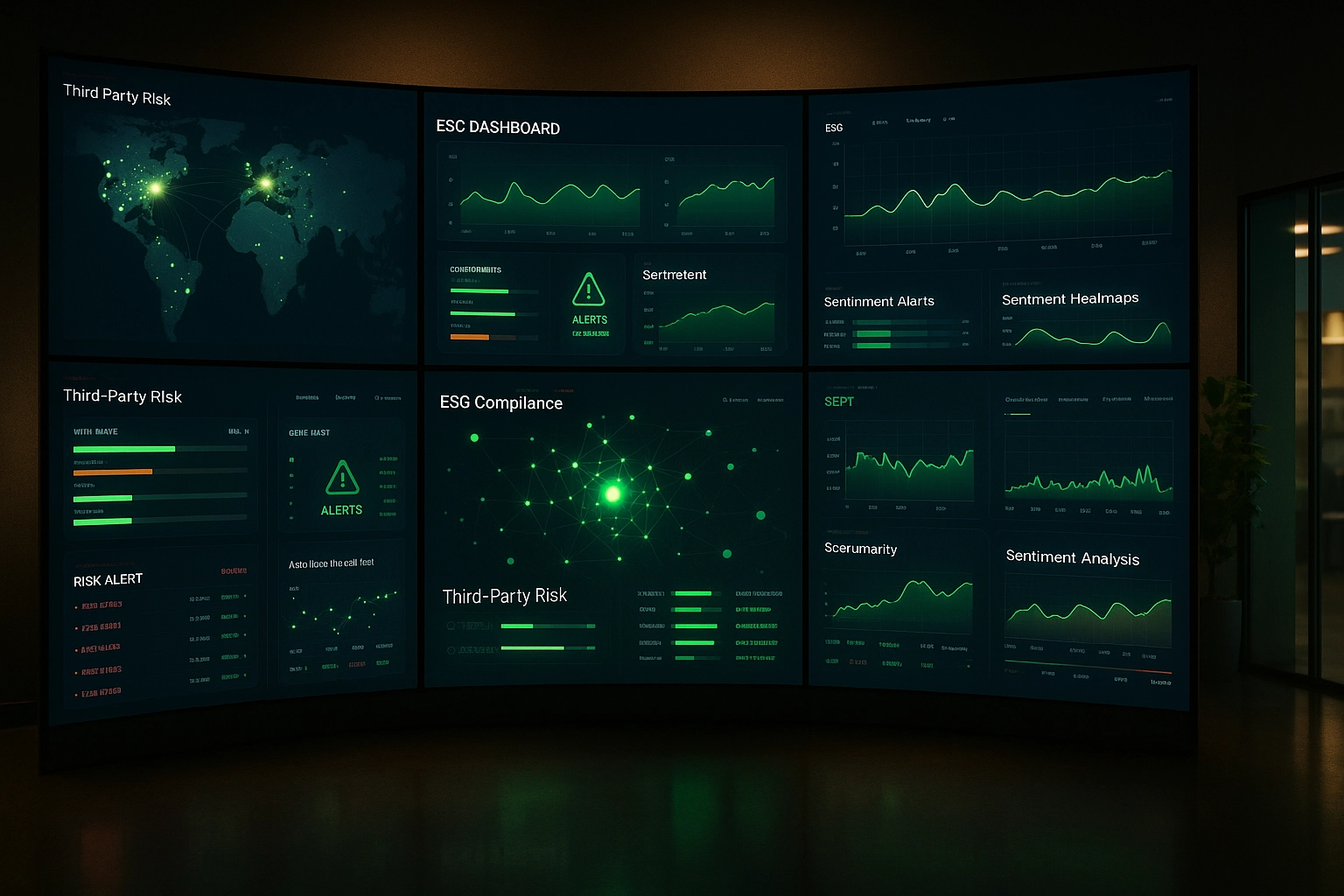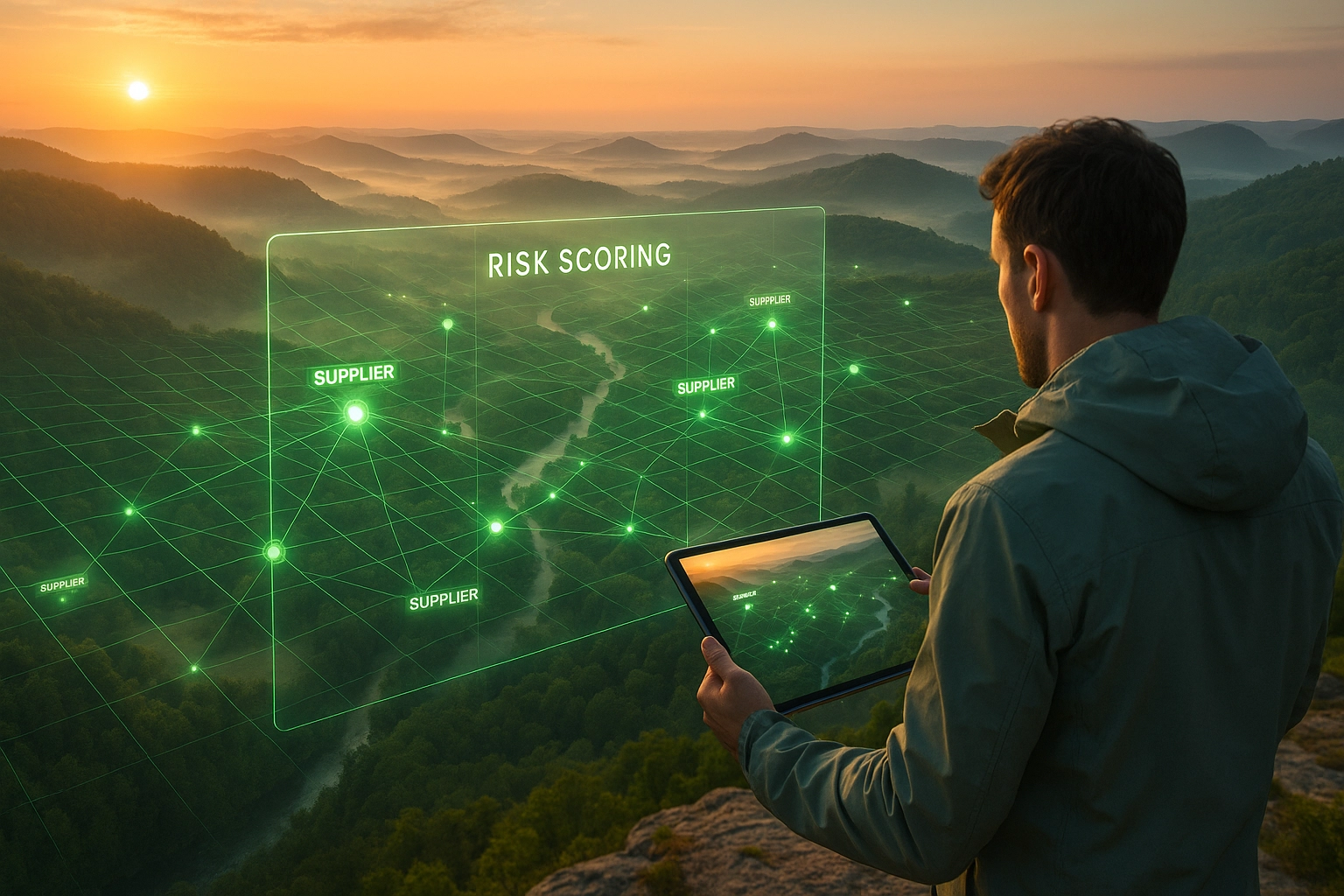Artificial Intelligence and Third-Party Risk Management: A Strategic Alliance

The integration of artificial intelligence into third-party governance represents a major transformation for organizations seeking to strengthen their operational resilience. This technology enables traditional collaborative third-party assessment processes—often laborious—to evolve into agile, proactive mechanisms. According to Gartner, by 2026, more than 80% of enterprises will have used AI models or deployed AI-enabled applications in production, compared with less than 5% in 2023—marking the transition from TPRM (Third Party Risk Management) to TPGRC (Third Party Governance & Risk Control).
By analyzing real-world applications and AI innovations in third-party evaluation, this article sheds light on how artificial intelligence is redefining the landscape of regulatory resilience and collaborative third-party assessment. This evolution is particularly strategic at a time when managing the external partner ecosystem is becoming a critical performance and compliance issue for European organizations.
The alliance between artificial intelligence and third-party governance is a strategic symbiosis in which each element reinforces the other. AI brings massive analysis and predictive capabilities, while third-party governance provides the methodological and regulatory framework. This complementarity creates a virtuous cycle: the more structured the governance data, the more effective AI becomes; and the better AI performs, the more mature third-party governance grows.
The Rise of Artificial Intelligence in Risk Management
The emergence of AI is profoundly transforming third-party governance. According to Gartner’s forecasts, AI and machine learning will reduce the probability of major third-party incidents by 60% and cut detection and response times in half. This marks a significant shift from basic TPRM to a more comprehensive TPGRC approach, reflecting the growing maturity of the market.
Transforming Third-Party Evaluation
AI is radically changing the third-party evaluation process by automating data collection and analysis. Machine learning algorithms can now process massive volumes of structured and unstructured information simultaneously, creating a dynamic map of potential risks. This continuous, large-scale analysis enables companies to take a proactive approach to partner ecosystem management.
Predictive Analysis and Early Risk Detection
One of AI’s most significant advancements is predictive analysis. By examining historical trends and real-time data, AI systems can anticipate potential issues before they occur. For example, in the construction sector, AI can predict potential delivery delays by analyzing supplier performance history and current market conditions.
Continuous Evaluation and Real-Time Monitoring
Unlike traditional methods based on periodic assessments, AI enables continuous monitoring of third parties. This dynamic approach is crucial in industries where supply chains are complex and risks evolve rapidly. For instance, for ICPE (Environmentally Regulated Installations) sites, AI can continuously monitor environmental compliance indicators and issue instant alerts in case of deviations.
Real-World AI Applications in Collaborative Third-Party Evaluation
Integrating AI into collaborative third-party assessment processes delivers tangible efficiency and accuracy benefits.
Automated Collaborative Evaluations
AI can automate much of the evaluation process, reducing time and resource requirements. According to McKinsey, technologies like AI can cut the time needed to identify suitable suppliers by 90% or more. This frees teams to focus on strategic tasks such as in-depth analysis and action planning.
Advanced Document Analysis
AI excels at reviewing large volumes of documents—crucial in third-party assessments. For example, in the public sector, AI can quickly review thousands of tender documents to ensure bidders meet regulatory requirements, a vital capability for local authorities managing numerous public contracts.
Dynamic Risk Scoring
AI enables dynamic risk scoring systems that adjust in real time as new information becomes available. In retail, AI can continuously assess supplier performance on marketplaces, factoring in customer reviews, delivery times, and product quality.
Anomaly and Fraud Detection
AI is highly effective in identifying anomalies and potential fraud. In the financial sector, for example, AI can analyze transactions and partner behavior to spot suspicious patterns indicating money laundering or other illicit activities.
AI Innovations in Risk Management
Advances in AI are transforming the real-time monitoring of third parties. This strategic alliance between AI technologies and governance methodologies leverages tools like predictive analytics and natural language processing to anticipate resilience challenges in partner relationships. According to Trinetix, AI systems can now “process millions of data points in real time, providing a more precise and up-to-date view of potential risks.”
Advanced Anomaly Detection
AI excels in spotting anomalies within third-party ecosystems. In retail, for example, AI-powered monitoring platforms can continuously track marketplace performance and flag compliance deviations before they disrupt operations. According to the Hub Institute, this approach “multiplies engagement by six and doubles conversion” for companies that adopt it.
AI Integration and the Shift to TPGRC
Integrating AI into organizational structures requires careful planning to ensure a successful transformation to TPGRC.
Optimizing Collaborative Workflows
The main impact of this transformation is the creation of an agile governance ecosystem aligning third-party governance objectives with overall business strategies. In the public sector, municipalities use AI to optimize public procurement management and vendor evaluation. According to Babylone Consulting, “digital platforms enable real-time information sharing, which is essential for a fast, coordinated response” to third-party risks.
AI TRiSM: A Framework for Trusted AI
The AI TRiSM framework (AI Trust, Risk and Security Management) developed by Gartner ensures optimal governance, reliability, and security of AI systems. It is built on four key pillars:
- Explainability – ensuring transparency and understanding of AI decisions
- Model Operations – effective lifecycle management of AI models
- AI Application Security – protecting AI systems from threats and attacks
- Model Privacy – safeguarding data used by AI
By integrating the AI TRiSM framework into their third-party governance processes, organizations can strengthen trust in their partnerships while minimizing the risks associated with AI use. For example, in the public sector, this approach ensures that AI systems used for public procurement evaluation meet the highest ethical and security standards.
Want to implement effective AI-based third-party governance?
Discover how the Aprovall360 platform integrates AI and TPRM principles to strengthen your operational resilience.
Assessing the Security of Third-Party AI Systems
Evaluating the AI systems used by third-party partners is a major challenge for third-party governance. According to an Aon study, “AI solutions frequently rely on third-party vendors, which can pose significant security challenges.” To effectively manage these risks, a structured approach that includes prioritization, evaluation, and transparency is essential.
Collaborative Assessment Methodology
Implementing a collaborative evaluation of external AI systems requires a rigorous methodology focused on analyzing third-party partners rather than internal processes. In the industrial sector, this approach makes it possible to examine how suppliers deploy their own AI systems and assess their compliance with expected security standards.
According to Lumenalta, it is critical for contracting organizations to “verify how third-party partners assess the alignment of their algorithms with the expected outcomes, and whether they consider alternative approaches to ensure the reliability of the services provided.” This methodology helps identify potential vulnerabilities in partners’ AI systems without interfering with their internal processes, while maintaining a collaborative rather than prescriptive relationship.
Prioritizing Strategic Partners
Prioritizing third-party partners based on their criticality is a key step. This hierarchy should consider several factors, such as “the regulatory requirements of your sector, the type and sensitivity of the data processed, and the potential impact on your critical business operations,” as highlighted by Aon.
Collaborative Evaluation and Regulatory Resilience
The shift toward a well-executed collaborative assessment is crucial to ensuring alignment with regulatory frameworks governing the use of AI in third-party governance. In the construction sector, this approach can be used to verify subcontractors’ compliance with posted worker regulations — a major issue for the industry.
Regulatory Synergies
Leveraging synergies between different regulations optimizes the effectiveness of third-party governance. According to Centraleyes, “AI-driven regulatory change management tools track and analyze regulatory developments, ensuring organizations remain informed and compliant.” This approach makes it possible to anticipate regulatory changes and proactively adapt assessment processes.
Toward Proactive Third-Party Risk Monitoring
The shift toward proactive monitoring of third-party partners marks a major evolution in modern third-party governance. This approach replaces traditional reactive methods with anticipatory strategies designed to predict and prevent threats before they materialize. According to a Scrut Automation study, “a proactive approach to third-party governance significantly reduces the likelihood or impact of security incidents, enabling organizations to save the time and resources that would otherwise be spent on crisis management.”
Intelligent Dashboards and Custom Indicators
The integrated Aprovall360 platform turns raw data into actionable insights through key performance indicators (KPIs) tailored to each industry. In the retail sector, for example, these dashboards enable real-time monitoring of marketplace performance and early detection of compliance gaps before they impact business operations. According to MetricStream, “unlike traditional periodic assessments, AI-powered systems continuously monitor various risk factors and deliver real-time updates.”
The Role of AI in Risk Mitigation
Artificial intelligence plays a decisive role in strengthening organizations’ operational resilience against third-party risks. Through intelligent automation, businesses can effectively prioritize alerts and focus on major incidents requiring immediate human intervention.
Predictive Resilience Modeling
Applying AI solutions facilitates predictive resilience modeling, allowing organizations to simulate various scenarios where the combined influence of internal and external factors is tested before any strategic decision is made. In the industrial sector, this approach is particularly valuable for anticipating potential disruptions in complex supply chains. According to IBM, “by using a blend of qualitative and quantitative analytics, organizations can gain a clear understanding of their potential risks, helping them prioritize high-risk threats and make more informed decisions.”
Ready to transform your third-party governance approach with AI?
Aprovall supports over 430,000 third-party partners across Europe with TPRG (Third-Party Governance, Risk, and Compliance) solutions tailored to your industry.
Toward AI-Enhanced Third-Party Governance
Artificial intelligence is profoundly transforming third-party governance, enabling a strategic shift from traditional TPRM to TPGRC (Third-Party Governance & Risk Control). As we have seen, AI is revolutionizing collaborative third-party assessment through process automation, advanced document analysis, real-time monitoring, and predictive resilience modeling.
This technological evolution addresses specific sectoral challenges: regulatory compliance in construction, management of industrial cyber risks in manufacturing, marketplace monitoring in retail, and optimization of public procurement for the public sector. Leveraging its experience with 430,000 third parties and its dual ISO 27001/27701 certification, the Aprovall360 platform offers an integrated solution that significantly reduces “supplier fatigue” thanks to its shared model.
As 2026 approaches, organizations that adopt AI technologies for third-party governance will move beyond risk management to truly optimize their partner ecosystems—strengthening operational resilience in an ever-changing economic and regulatory landscape.
A Strategic Alliance for Resilience
The alliance between AI and third-party governance goes beyond the simple addition of technologies and processes. It represents a fundamental transformation in which artificial intelligence is no longer just a tool, but a strategic partner in evaluating and managing third-party ecosystems. This alliance enables organizations to shift from a reactive posture to a proactive approach, turning third-party governance into a genuine performance driver.
These articles might interest you
-
 14 September 2024Aprovall supports you in your new due diligence obligations arising from the European CS3D Directive.SolutionsThe Corporate Sustainability Due Diligence Directive, known as “CS3D”, was definitively adopted on Wednesday, April 24, 2024, by the European Parliament. The directive now needs to be officially approved by the Council and signed before being published in the EU Official Journal. It will enter into force 20 days later. Member States will then have […]
14 September 2024Aprovall supports you in your new due diligence obligations arising from the European CS3D Directive.SolutionsThe Corporate Sustainability Due Diligence Directive, known as “CS3D”, was definitively adopted on Wednesday, April 24, 2024, by the European Parliament. The directive now needs to be officially approved by the Council and signed before being published in the EU Official Journal. It will enter into force 20 days later. Member States will then have […]Read more
-
 08 July 2025Why integrate media monitoring into your third-party evaluation?SolutionsWith the rapid acceleration of digital information and the proliferation of media sources, real-time monitoring of your third-party partners’ media presence has become a critical strategic issue. Media monitoring is now an essential part of collaborative evaluation processes for any analyst seeking a comprehensive view of third-party risk. Whether the information is positive or negative, […]
08 July 2025Why integrate media monitoring into your third-party evaluation?SolutionsWith the rapid acceleration of digital information and the proliferation of media sources, real-time monitoring of your third-party partners’ media presence has become a critical strategic issue. Media monitoring is now an essential part of collaborative evaluation processes for any analyst seeking a comprehensive view of third-party risk. Whether the information is positive or negative, […]Read more
-
 03 March 2025Understanding Dynamic Risk Scoring: Fundamentals and Implementation for Third-Party GovernanceSolutionsDynamic risk scoring has become an essential tool for organizations seeking to optimize their third-party governancestrategies. With increasingly complex partnerships and growing regulatory requirements in Europe—particularly DORA and NIS 2—it is crucial to understand how this methodology transforms collaborative assessment of third-party partners. According to data reported by Sprinto, 58% of compliance teams identify assessing third-party responsiveness as their main challenge […]
03 March 2025Understanding Dynamic Risk Scoring: Fundamentals and Implementation for Third-Party GovernanceSolutionsDynamic risk scoring has become an essential tool for organizations seeking to optimize their third-party governancestrategies. With increasingly complex partnerships and growing regulatory requirements in Europe—particularly DORA and NIS 2—it is crucial to understand how this methodology transforms collaborative assessment of third-party partners. According to data reported by Sprinto, 58% of compliance teams identify assessing third-party responsiveness as their main challenge […]Read more
-
 05 March 2025Maximizing the Impact of Dynamic Risk Scoring: Monitoring and Personalization for Effective Third-Party Risk ManagementSolutionsIn our previous article, we explored the fundamentals of dynamic risk scoring and its essential role in evolving third-party governance practices. This innovative approach, leveraging real-time data and sophisticated analytical models, is profoundly transforming the way organizations assess their third-party partners. As European regulatory requirements tighten with DORA, NIS 2, and the convergence of CSRD/Duty of Vigilance, organizations must […]
05 March 2025Maximizing the Impact of Dynamic Risk Scoring: Monitoring and Personalization for Effective Third-Party Risk ManagementSolutionsIn our previous article, we explored the fundamentals of dynamic risk scoring and its essential role in evolving third-party governance practices. This innovative approach, leveraging real-time data and sophisticated analytical models, is profoundly transforming the way organizations assess their third-party partners. As European regulatory requirements tighten with DORA, NIS 2, and the convergence of CSRD/Duty of Vigilance, organizations must […]Read more
